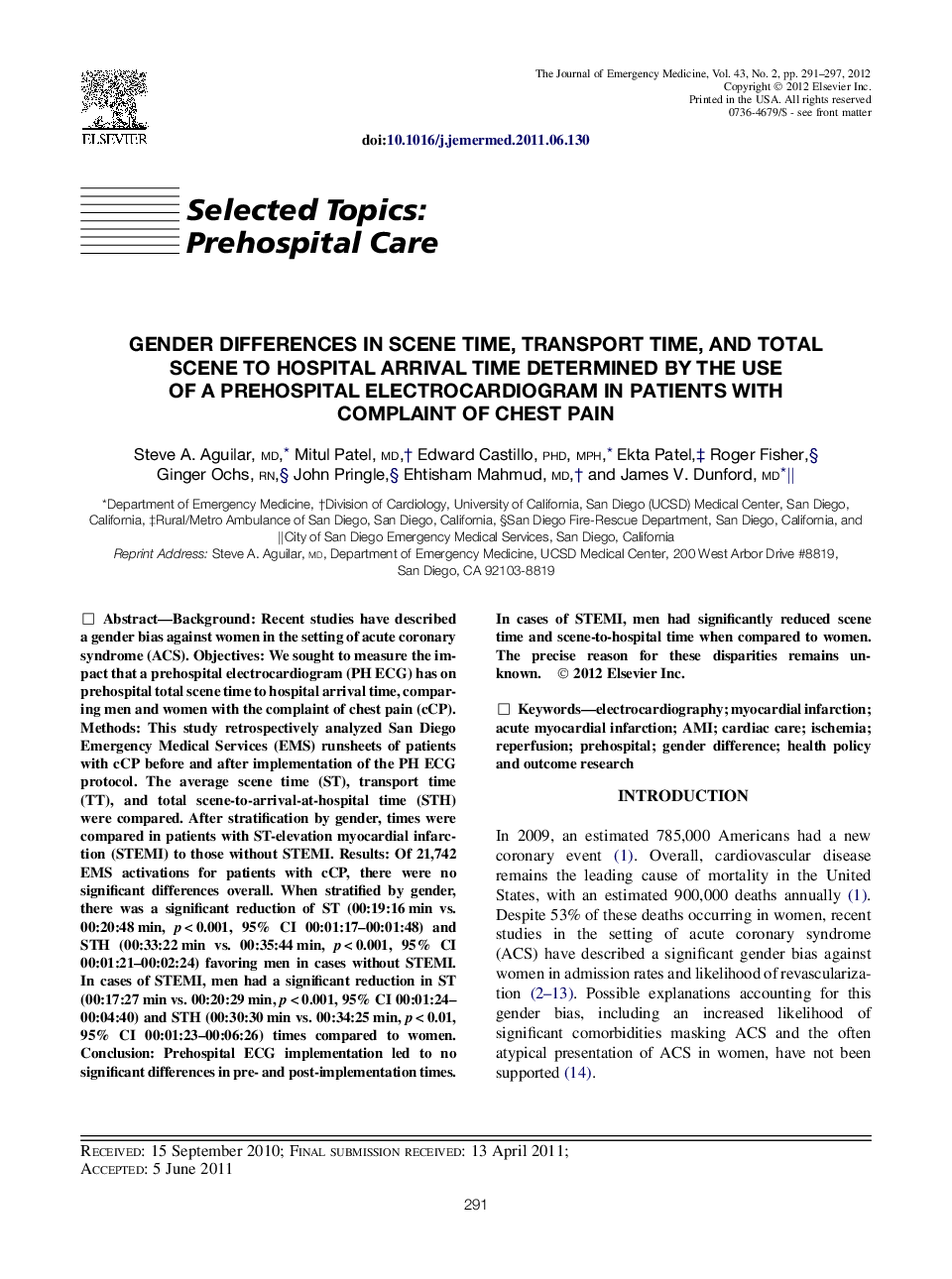| کد مقاله | کد نشریه | سال انتشار | مقاله انگلیسی | نسخه تمام متن |
|---|---|---|---|---|
| 3249497 | 1589158 | 2012 | 7 صفحه PDF | دانلود رایگان |

BackgroundRecent studies have described a gender bias against women in the setting of acute coronary syndrome (ACS).ObjectivesWe sought to measure the impact that a prehospital electrocardiogram (PH ECG) has on prehospital total scene time to hospital arrival time, comparing men and women with the complaint of chest pain (cCP).MethodsThis study retrospectively analyzed San Diego Emergency Medical Services (EMS) runsheets of patients with cCP before and after implementation of the PH ECG protocol. The average scene time (ST), transport time (TT), and total scene-to-arrival-at-hospital time (STH) were compared. After stratification by gender, times were compared in patients with ST-elevation myocardial infarction (STEMI) to those without STEMI.ResultsOf 21,742 EMS activations for patients with cCP, there were no significant differences overall. When stratified by gender, there was a significant reduction of ST (00:19:16 min vs. 00:20:48 min, p < 0.001, 95% CI 00:01:17–00:01:48) and STH (00:33:22 min vs. 00:35:44 min, p < 0.001, 95% CI 00:01:21–00:02:24) favoring men in cases without STEMI. In cases of STEMI, men had a significant reduction in ST (00:17:27 min vs. 00:20:29 min, p < 0.001, 95% CI 00:01:24–00:04:40) and STH (00:30:30 min vs. 00:34:25 min, p < 0.01, 95% CI 00:01:23–00:06:26) times compared to women.ConclusionPrehospital ECG implementation led to no significant differences in pre- and post-implementation times. In cases of STEMI, men had significantly reduced scene time and scene-to-hospital time when compared to women. The precise reason for these disparities remains unknown.
Journal: The Journal of Emergency Medicine - Volume 43, Issue 2, August 2012, Pages 291–297